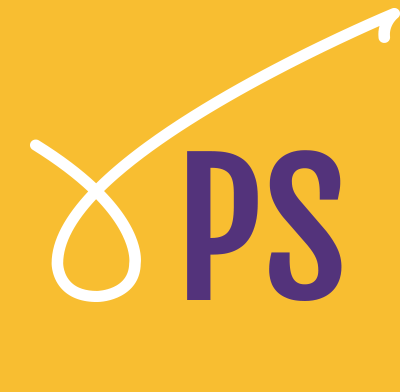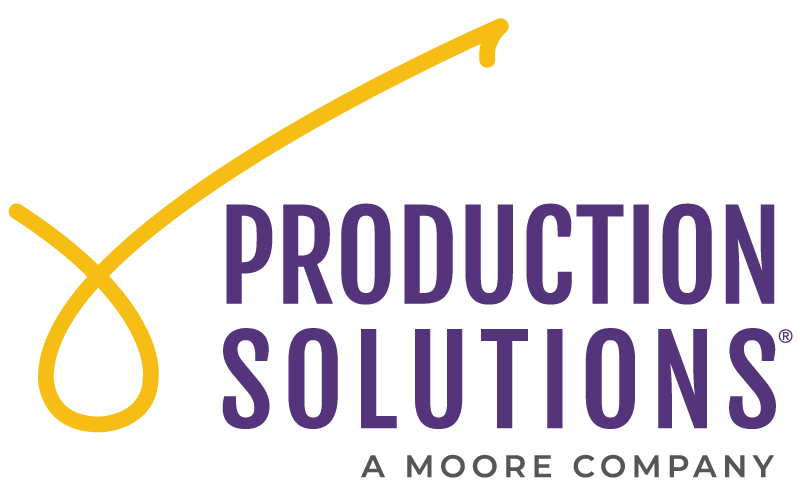Four Ways to Ensure Your Direct Mail Package Makes a Great First Impression
 Production Solutions
Production Solutions
The May/June Fundraising Success column by Willis Turner entitled “6 Ways to Motivate Donors” relates physics and the law of motion to fundraising and how to ‘put your donor in motion, emotionally and physically…enough to make a gift”. His first two points are worth noting: “Make the reader notice your outer envelope” and “compel the donor inside”. The summary of techniques for getting recipients interested in reading further and an envelope noticed included color, size, mystery (as in an ‘unbranded’ envelope), and envelope teaser copy. Choice of postage treatment isn’t referenced as a direct mail technique, but there are plenty of winning examples in which postage stamps deliver a strong first impression. Here are a few of our favorites.
#1: Custom Stamps
 Several of the 2014 DMAW MAXI Award-winning formats used custom postage stamps attached to an inside component. The custom stamps were peeking through a 2nd window in order to tease the reader into opening the envelope. Custom stamp examples include the Marine Toys for Tots Foundation stamp, St. Labre Indian School (The Buffalo Have Returned and Keeping the Miracle Alive) stamps, and the National Human Education Society Adopt stamp.
Several of the 2014 DMAW MAXI Award-winning formats used custom postage stamps attached to an inside component. The custom stamps were peeking through a 2nd window in order to tease the reader into opening the envelope. Custom stamp examples include the Marine Toys for Tots Foundation stamp, St. Labre Indian School (The Buffalo Have Returned and Keeping the Miracle Alive) stamps, and the National Human Education Society Adopt stamp.
 Stamps with custom images can be designed and purchased in sheets on sites like Zazzle, Picture It Postage and Photo Stamps, but the cost for a custom first class stamp with a face value of 49 cents can retail for over $1.00 each. The self-adhesive postage stamps are typically hand applied. While this is not a tall order when mailing 100 wedding invites, it can substantially add to costs when using a mailshop service at larger quantities. However, if you’re willing to do the research, you may be able to purchase some custom stamps on rolls, which eliminates hand affixing and also brings the cost of the stamp itself down.
Stamps with custom images can be designed and purchased in sheets on sites like Zazzle, Picture It Postage and Photo Stamps, but the cost for a custom first class stamp with a face value of 49 cents can retail for over $1.00 each. The self-adhesive postage stamps are typically hand applied. While this is not a tall order when mailing 100 wedding invites, it can substantially add to costs when using a mailshop service at larger quantities. However, if you’re willing to do the research, you may be able to purchase some custom stamps on rolls, which eliminates hand affixing and also brings the cost of the stamp itself down.
 The option of printing USPS stamps on demand with your own PC, printer, etc. is available through stamps.com, but requires registration, a monthly fee and supplies for printing postage on labels.
The option of printing USPS stamps on demand with your own PC, printer, etc. is available through stamps.com, but requires registration, a monthly fee and supplies for printing postage on labels.
 Custom postage stamps can take your mail piece design from good to great, but require a significant investment to print and apply, so they are typically reserved for a special appeal or targeted to the mid – high dollar audience.
Custom postage stamps can take your mail piece design from good to great, but require a significant investment to print and apply, so they are typically reserved for a special appeal or targeted to the mid – high dollar audience.
#2: Multiple Stamps
Alternatively, getting your mail piece noticed can be accomplished with a series of 2 – 5 non custom stamps applied to the outer envelope. The technique is used to convey the impression of an exclusive mail piece with high touch assets.
Do your homework in advance of final art approval because the string of stamps technique is an additional investment and only a few select mailshops have the capability to apply stamps with water based adhesive. Additional considerations:
- Envelopes with multiple postage stamps cannot be commingled in many facilities.
- For high quantity mailings, confirm the required stamps are available in coils of 2,000, 5,000 or 10,000 for machine application.
- Using a Forever stamp? Be sure to include the additional cost for hand affixing, as this self-adhesive stamp is only available in sheets of 100. The same is true for the Lincoln 21-cent stamp.
- Although stamps in small denominations like the 2-cent Navajo Necklace Stamp, the 1-cent Bobcat, the 3-cent Silver Coffee Pot and the 10-cent American Clock are available in roll sizes of 10,000, all have water based adhesive.
- How many stamps can be applied in a series? As many as you’d like as long as they add up to the postage required for the postal services rendered.
- You cannot combine postage treatments such as stamp + meter, indicia + stamp, etc.
 In the following example, first class full rate postage for a heavy 2 ounce newsletter appeal was applied using a string of four stamps. The 6 x 9 closed face envelope was just one of the three personalized components for the select donor segment of $500+, which included a reply form with pre-filled phone number and the email of the recipient. Note the first class USPS cancellation – wavy lines, city/state and date of cancellation. The first three stamps were applied mechanically in two passes – the last was hand affixed.
In the following example, first class full rate postage for a heavy 2 ounce newsletter appeal was applied using a string of four stamps. The 6 x 9 closed face envelope was just one of the three personalized components for the select donor segment of $500+, which included a reply form with pre-filled phone number and the email of the recipient. Note the first class USPS cancellation – wavy lines, city/state and date of cancellation. The first three stamps were applied mechanically in two passes – the last was hand affixed.
 This heavy capital campaign mailing required additional postage and used two hand affixed $1.00 stamps to make a unique impression. The two way match included a heavily branded 6 x 9 envelope, letter and DVD, with details of the $150,000 campaign goal. A non-personalized wallet flap return envelope with pre-printed asks was unusual, but the central ask was in the letter requesting the recipient to host a peer to peer event to raise awareness and pledge commitments.
This heavy capital campaign mailing required additional postage and used two hand affixed $1.00 stamps to make a unique impression. The two way match included a heavily branded 6 x 9 envelope, letter and DVD, with details of the $150,000 campaign goal. A non-personalized wallet flap return envelope with pre-printed asks was unusual, but the central ask was in the letter requesting the recipient to host a peer to peer event to raise awareness and pledge commitments.
#3: Commemorative Stamps
 The next example, a leadership invite with an ask of $1500, used two 70-cent commemorative stamps on a 9 x 12 envelope with hand affixed oversized address label. A single stamp, metered or indicia postage would not have been as impressive or proportional. No envelope teaser is used. Inside, this special appeal included a certificate, invitations to behind the scenes tours and lectures, a 4-page research report and a ‘leadership liaison’ – not a 1-800 number but a real name with phone and email contact info.
The next example, a leadership invite with an ask of $1500, used two 70-cent commemorative stamps on a 9 x 12 envelope with hand affixed oversized address label. A single stamp, metered or indicia postage would not have been as impressive or proportional. No envelope teaser is used. Inside, this special appeal included a certificate, invitations to behind the scenes tours and lectures, a 4-page research report and a ‘leadership liaison’ – not a 1-800 number but a real name with phone and email contact info.
 This annual report appeal with matching gift opportunity used a 91-cent first class commemorative stamp of novelist Ralph Ellison to help make a striking first impression. The weight of the mailing – under 3 ounces – was noticeable and added to the intrigue. Inside, the annual report was impressive in content and size as it was a condensed version of the complete annual report that
This annual report appeal with matching gift opportunity used a 91-cent first class commemorative stamp of novelist Ralph Ellison to help make a striking first impression. The weight of the mailing – under 3 ounces – was noticeable and added to the intrigue. Inside, the annual report was impressive in content and size as it was a condensed version of the complete annual report that
could be found on the web at a designated URL. Throughout the annual report, the mission, opportunities and accomplishments were beautifully conveyed through color images, select URLs, stories and a milestones infographic.
#4: Exclusivity
 This acquisition invitation from a nonprofit foundation used a 6 x 9 envelope with window, two stamps and a ‘Top Secret’ stamp effect to help convey the uniqueness of this mailing. Adding to the intrigue of this package are the two historical inserts, ‘de-classified’ documents from 1944.
This acquisition invitation from a nonprofit foundation used a 6 x 9 envelope with window, two stamps and a ‘Top Secret’ stamp effect to help convey the uniqueness of this mailing. Adding to the intrigue of this package are the two historical inserts, ‘de-classified’ documents from 1944.
 The 9 x 12 Civil War Trust Invitation format (a 2014 MAXI winner) used three Civil War Forever stamps – two applied to the outer envelope (notice the stacked configuration) and one applied to the return envelope. The outer envelope teaser ‘Personal: For Addressee Only’ implied exclusivity; the Board of Directors’ letterhead and the signed letter from celebrity Trace Adkins worked well together to convey the selectivity of the opportunity. The member upgrade options ranged from $1,000 – $10,000 as an annual commitment.
The 9 x 12 Civil War Trust Invitation format (a 2014 MAXI winner) used three Civil War Forever stamps – two applied to the outer envelope (notice the stacked configuration) and one applied to the return envelope. The outer envelope teaser ‘Personal: For Addressee Only’ implied exclusivity; the Board of Directors’ letterhead and the signed letter from celebrity Trace Adkins worked well together to convey the selectivity of the opportunity. The member upgrade options ranged from $1,000 – $10,000 as an annual commitment.
Custom, commemorative and strings of stamps – there are so many stamp options and techniques to engage the curiosity of the recipient. Make your choice of postage treatment early in the creative process to accurately assess the costs: postage, application, and time. If you’d like to take a look at the complete USA Philatelic Catalog, you can download it here.




